Pumpkin Ketchup, easy as pie.
 Wednesday, November 2, 2011 at 9:03AM
Wednesday, November 2, 2011 at 9:03AM 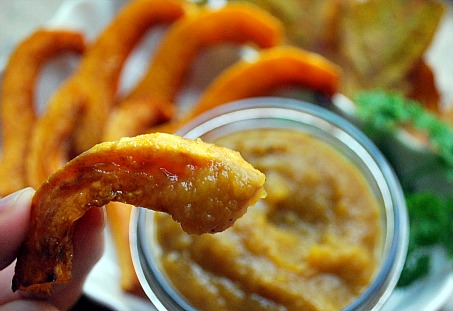
Peter Peter Pumpkin-Eater,
Had a wife and couldn't keep her.
If only he'd made her some Pumpkin Ketchup.
I bet she would have stuck around.
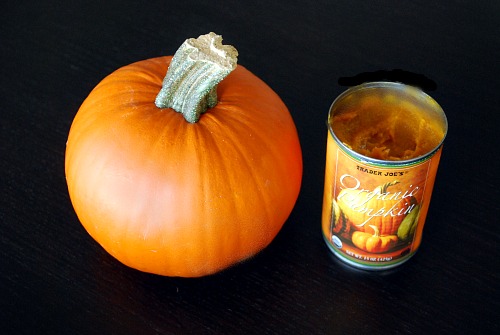
For pumpkin ketchup, you can use either fresh "pie" pumpkins or canned pumpkin, and you'll achieve very similar results. Having options makes this project seem easier already, doesn't it?
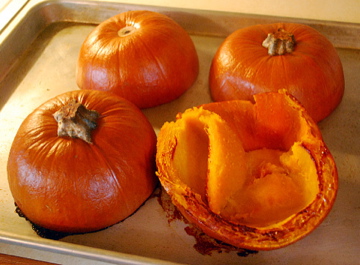
After roasting "Sugar Pie" pumpkins, I scooped the pumpkin flesh out of the shell. Each one of these pumpkin halves pictured here usually yield about two cups of flesh...
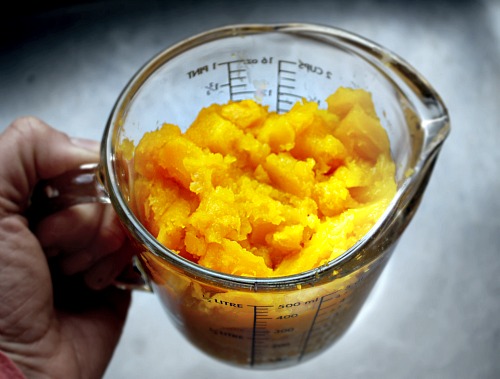
...which is about the same as one 15 oz. can of 100% pumpkin puree. Be sure you don't use pumpkin pie filling mix.
In two separate pans I combined pumpkin -- a 15 ounce can of pumpkin in one pan, and 2 cups of fresh-baked pumpkin in another -- plus apples, onions, brown sugar, vinegar, and a variety of spices. I cooked both of these mixtures until the chunks of apples and onions were soft.
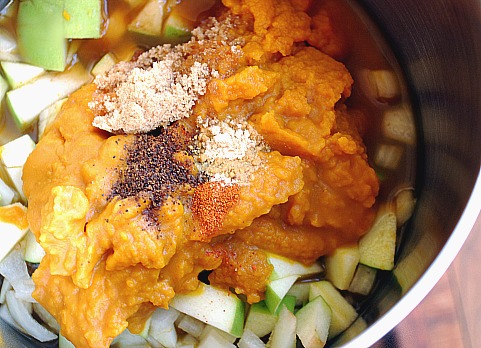
The canned pumpkin, shown both above and below, isn't as dense as the baked Sugar Pie pumpkin flesh.
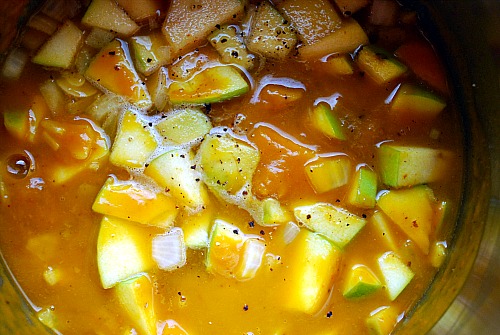
Again this is canned pumpkin, shown above.
Notice the difference in texture of the fresh-baked pumpkin, below.
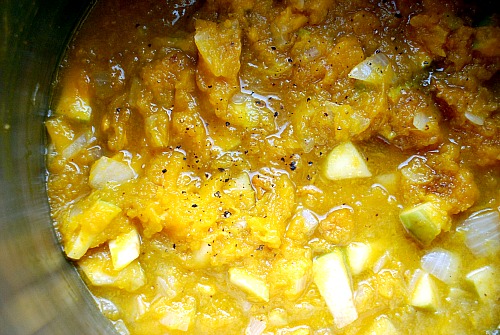
After simmering on the stove for about an hour, here are the two nearly identical mixtures alongside each other.
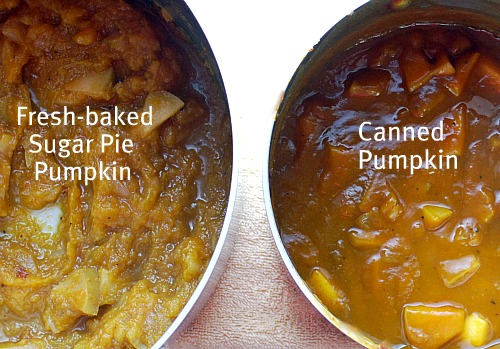
At this point, I could have cooked the canned pumpkin blend longer, to help the liquid to evaporate, but I decided to run it through the food mill "as is", knowing the pureed apples and onions would thicken the ketchup.
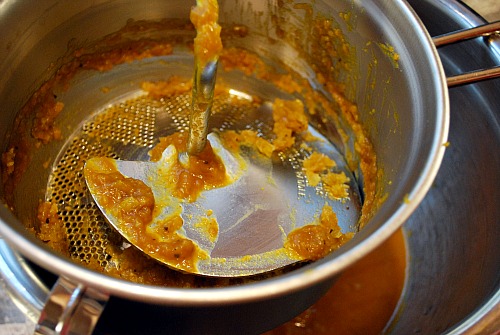
Using a food mill purees the mixture into a smooth consistency, plus it separates the apple's peels and any stray pumpkin fibers from the ketchup. The result is a perky pumpkin condiment, perfect for burgers or meatloaf, or any other ketchup-friendly foods.
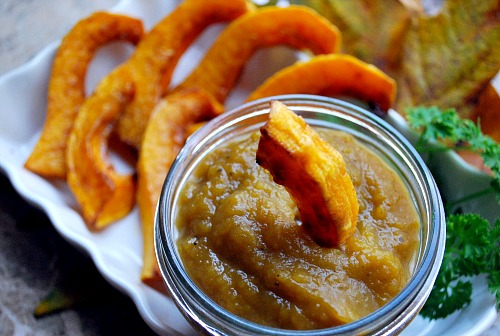
Once again, I ask the question:
"Who says ketchup has to be made from tomatoes?"
Pumpkin Ketchup has a very similar taste profile to classic tomato ketchup. You might not be a squash fan, but I think if I could get you to taste Pumpkin Ketchup and Tomato Ketchup side-by-side, you'd be willing to trade out the traditional tomato stuff for this nummy new-fangled sauce.
By the way, this ketchup was delicious with another one of my fall favorites, Oven Baked Butternut Squash Fries.
Did I mention I love squash?
Did I even need to?
 Brook Hurst Stephens | Comments Off |
Brook Hurst Stephens | Comments Off | 
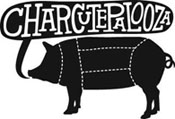


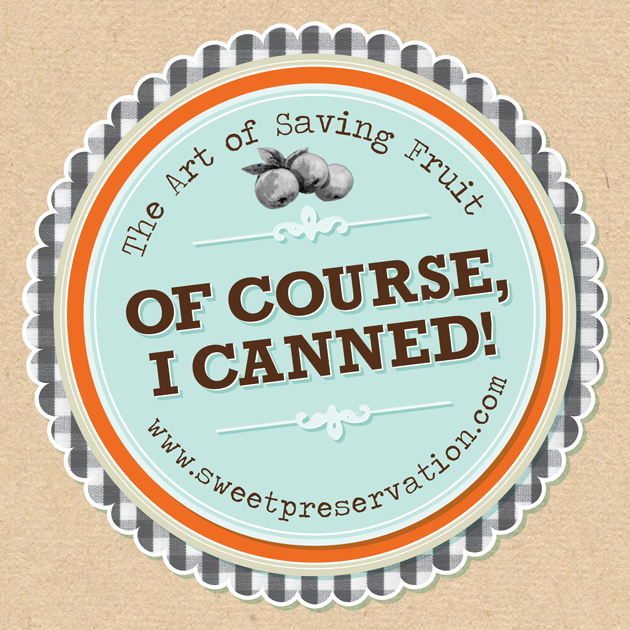




Reader Comments (4)
Do you keep the ketchup in the fridge or do you can it? And how long will it keep?
Thanks!
Hi Janice.
I think you can store it 3 months in the fridge, 6 months in the freezer, or if you want to store it longer, you could process it according to USDA specifications, using a boiling water bath (10 minutes for 4 ounce jars / 15 minutes for 8 ounce jars). Once properly sealed, it should last one year on the shelf. Well, it probably won't "last" that long, because you'll have eaten it by then.
I'll post the recipe soon....I am making something with Bosc pears and some local organic fresh cranberries today, Once I'm done with that project, I have a 30# case of quince in my car!
Thanks for reading my blog.
As pumpkin puree is no longer approved for canning, I was wondering what recipe you used to base your USDA instructions for boiling water processing. Is there a recipe in the Ball Blue Book or on the National Center for Home Food Preservation website that I could reference? Thanks
Hi,
I'm going to keep this brief because it's late at night but I want to respond.
Pumpkin purée by itself is a low acid food, but Pumpkin Ketchup has vinegar in it, which acidifies it. (I list vinegar as one of the ketchup ingredients in my blog post.)
If you have concerns about safety, you should only make a small batch, and eat it within 2 or 3 weeks. If you make more than you can eat as a condiment, you can also use this ketchup as you would tomato ketchup, as a base for barbecue sauce or mixed into meatloaf, for example.
B